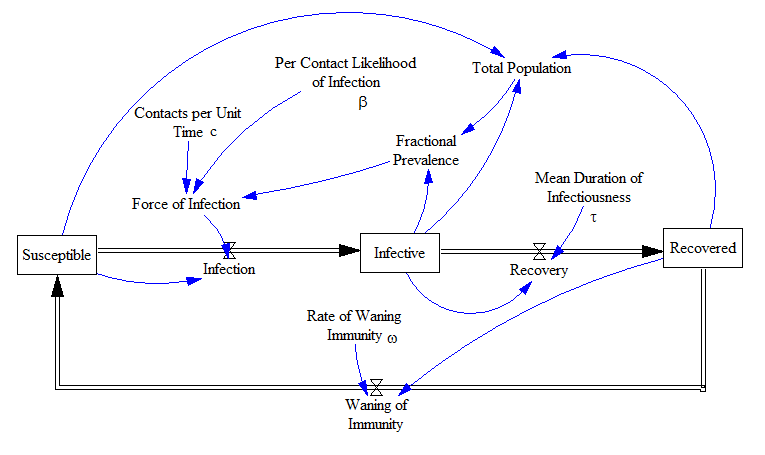Compositional System Dynamics for Public Health
Posted by John Baez
The Topos Institute has a colloquium every week. This time it’s by my old grad school pal Nate Osgood. He’s a computer scientist, he helped lead Canada’s COVID modeling effort…
… and he is now spear-heading a project to develop software that uses ideas from category theory to make it easier to create models of epidemic disease!
I am completely biased, since I’m involved in this — but I am really excited about how category theory, computer science and epidemiology are meeting in this project and yielding practical tools for public health.
His talk is Thursday June 29, 10:00-11:00 Pacific Time. To watch it either live or recorded go here.
It should be fun, because I believe he and his grad student Xiaoyan Li will attempt to assemble a disease model in real time using our software. Read on for more details.
Here is his talk abstract:
- Nathaniel Osgood, Towards compositional system dynamics for public health.
Abstract: For decades, System Dynamics (SD) modeling has served as a prominent, diagram-centric methodology used for public health modeling. Much of its strength arises from its versatile use of 3 types of diagrams, with each serving both to elevate transparency across the interdisciplinary teams responsible for most impactful models, and to reason about patterns of system behavior. Causal loop diagrams (CLDs) are used in semi-qualitative processes early in the modeling process and seek to support insight into feedback structure, behavioral modes, and leverage points. As modeling proceeds, system structure diagrams further distinguish stocks (accumulations) from flows and material from informational dependencies. Stock & flow diagrams build on that representation to characterize mathematical dependencies, quantify parameters and initial values for stocks, and have been particularly widely used in scenario simulation in public health and mathematical epidemiology. While ubiquitous use of diagrams renders SD modeling markedly effective in supporting team science and shaping stakeholders’ mental models, existing tools suffer from a number of shortcomings. These include poor support for modularity, cumbersome and obscure model stratification, and an inability to capture the relationships between the 3 diagram types.
Within this talk, we describe initial progress towards creating a framework for compositional System Dynamics, including theory, API support via StockFlow.jl within AlgebraicJulia, and ModelCollab — a real-time collaborative tool to support interdisciplinary teams in modularly building, composing and flexibly analyzing Stock & Flow diagrams. Our approach separates syntax from semantics, and characterizes diagrams using copresheaves with a schema category. Diagram composition draws on the theory of structured cospans and undirected wiring diagrams, and employs pullbacks for model stratification. Model interpretation is achieved via functorial semantics, with ordinary differential equations being just one of several semantic domains supported. After describing the current state of implementation, we describe plans for future work, including enriching support for CLDs, and adding support for several computational statistics algorithms and additional types of structurally-informed model analyses. This is joint work with John Baez, Evan Patterson, Nicholas Meadows, Sophie Libkind, Alex Alegre and Eric Redekopp.
For details (if this talk abstract wasn’t long enough for you), try our paper:
- John C. Baez, Xiaoyan Li, Sophie Libkind, Nathaniel D. Osgood and Eric Redekopp, A categorical framework for modeling with stock and flow diagrams, to appear in Mathematics for Public Health, Springer.

